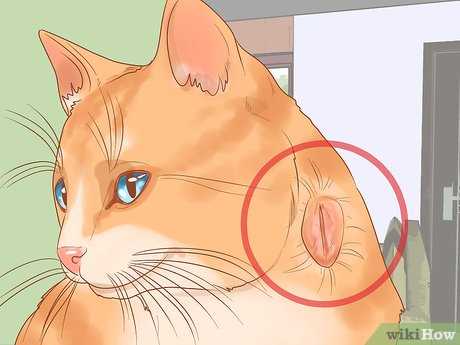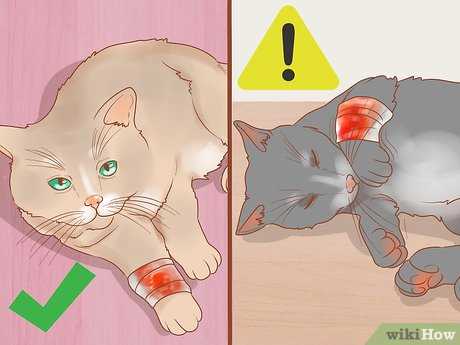First things first, if you notice a cut or scrape on my fur, clean it right away with warm water and mild soap. Gently rinse the area to remove any dirt or debris. Pat it dry with a soft cloth–no rubbing, please!
Next, apply an antiseptic solution specifically formulated for pets, avoiding anything designed for humans. It’s crucial to prevent infection, so look for a product that is safe for our kind. Make sure to follow the instructions on the label.
After applying the antiseptic, cover the area with a bandage if the injury is in a spot that can be easily reached. This helps keep it clean and protected from further irritation. If I start to lick or chew at the bandage, consider using an Elizabethan collar to keep the area safe.
Monitor the healing process closely. If the injury appears red, swollen, or shows any signs of discharge, it’s time to consult with a veterinarian. Keeping an eye on my mood and behavior is also essential; any signs of discomfort should not be overlooked.
Treating Injuries on Your Feline Friend
First, gather your supplies: antiseptic solution, sterile gauze, adhesive tape, and some treats to keep your buddy calm. Clean the area around the injury with a gentle antiseptic to prevent infection.
Next, apply a sterile gauze pad directly onto the affected area, ensuring it covers the entire surface. Wrap it with adhesive tape, but not too tightly–comfort is key. Check regularly to ensure it stays in place and doesn’t cause discomfort.
Monitor your furry companion for signs of pain or discomfort. If they seem distressed, offer some favorite snacks to ease their worries. Keep an eye on the site for any swelling or unusual discharge; prompt action is necessary if these occur.
Limit their activity to allow time for healing. Create a cozy spot for your pal to rest, away from other pets or distractions. If the injury doesn’t improve within a few days or shows signs of worsening, seeking professional help is essential.
Lastly, keep an eye on their behavior. If they’re licking or biting at the area, consider an Elizabethan collar to prevent further irritation. Your attention and care can make all the difference in their recovery.
Assessing the Severity of the Wound
First, examine the area closely. If there’s excessive bleeding, immediate attention is necessary. Apply gentle pressure with a clean cloth to stop the flow. If the blood doesn’t clot within a few minutes, seek veterinary help.
Next, check for signs of infection. Swelling, redness, or discharge indicates potential complications. If the area feels warm or emits a foul odor, it’s a red flag. Monitor for any changes in behavior; hiding or sudden aggression may signal pain.
Evaluate the depth of the injury. If it’s superficial, cleaning may suffice. For deeper cuts that expose underlying tissues, professional evaluation is advisable. Look for any foreign objects lodged in the skin, as these can lead to more severe issues if left untreated.
Consider the location as well. Injuries near vital areas, such as the face or paws, may require more careful handling. Movement around these spots can complicate healing, so take this into account during your assessment.
Lastly, observe your overall health. If I show signs of lethargy, loss of appetite, or any unusual behavior, don’t hesitate to consult a veterinarian. Timely intervention can make a significant difference in recovery outcomes.
Gathering Necessary Supplies for Treatment

Ensure you have the following items ready before addressing any injuries:
- Clean, soft cloths or sterile gauze for cleaning and covering the area.
- Antiseptic solution suitable for animals, like chlorhexidine or iodine solution.
- Non-stick bandages or adhesive tape to secure dressings.
- Scissors to cut bandages or gauze.
- Tweezers for removing debris, if necessary.
- Disposable gloves to maintain hygiene during the process.
- Hydrogen peroxide, only if recommended by a vet, for cleaning stubborn spots.
- Pet-safe pain relief or any medication prescribed by a veterinarian.
Having these essentials on hand will make the process smoother. After you’re equipped, don’t forget to check out how to cook precooked shrimp in a skillet for a tasty treat afterward!
Cleaning the Wound Properly
First, I gather my supplies: warm water, mild soap, and clean gauze or cotton balls. I make sure the room is calm and quiet to keep my human from getting too nervous. It’s important to have me relaxed during the process.
Next, I suggest gently rinsing the affected area with warm water. This helps to remove any dirt or debris. My human should avoid using harsh soaps or chemicals, as these can irritate my skin.
After rinsing, a mild soap can be applied to clean the area more thoroughly. My human should use a soft cloth or gauze to lightly scrub around the edges of the injury, being careful not to apply too much pressure directly on the sensitive spot.
Once cleaned, it’s crucial to pat the area dry with a clean towel or gauze. This prevents moisture buildup, which could lead to infection.
Finally, if there’s any bleeding, my human should apply gentle pressure with a clean cloth until it stops. Keeping the area clean is essential for a smooth recovery.
Applying Dressings and Medications

First, choose a clean, breathable dressing that fits the size of the injury. Use non-stick pads or gauze to avoid further irritation. Secure the dressing with self-adhesive bandage or medical tape, ensuring it’s snug but not too tight to restrict blood flow.
Before applying any medications, consult a vet for appropriate topical solutions. If you have an antiseptic spray or ointment, apply a thin layer directly onto the affected area, following the vet’s instructions. Make sure to let it dry completely before covering it with a dressing.
| Step | Action |
|---|---|
| 1 | Select a clean dressing |
| 2 | Apply antiseptic if recommended |
| 3 | Cover with a non-stick pad |
| 4 | Secure with bandage or tape |
Check the dressing regularly, at least once a day. If it becomes wet or soiled, replace it immediately. Watch for any signs of irritation or unusual behavior; if something seems off, contact your vet right away.
Monitoring Healing and Recognizing Complications
Keep a close eye on the area for any signs of infection, like redness, swelling, or discharge. If I notice any unusual changes, it’s essential to take action immediately. A healthy recovery typically involves a gradual reduction in swelling and a return to normal skin color.
Observe my behavior; if I start licking excessively at the site or show signs of pain, such as vocalizing or hiding, these could indicate complications. It’s vital to ensure the dressing stays clean and dry, changing it regularly while monitoring for any unusual odors or color changes.
Pay attention to my appetite and energy levels. A sudden drop in either could signal a problem. If I’m not eating or seem lethargic, a vet visit is needed. Regular check-ins with the veterinarian can help catch issues before they escalate.
In addition to monitoring the healing process, engaging me with stimulating activities can help distract from any discomfort. Consider incorporating best interactive cat toys for indoor cats to keep me entertained while I recover.
Document any changes and share them with the vet, ensuring they have all the information needed to assist effectively. This proactive approach will help ensure a smooth and successful recovery.






